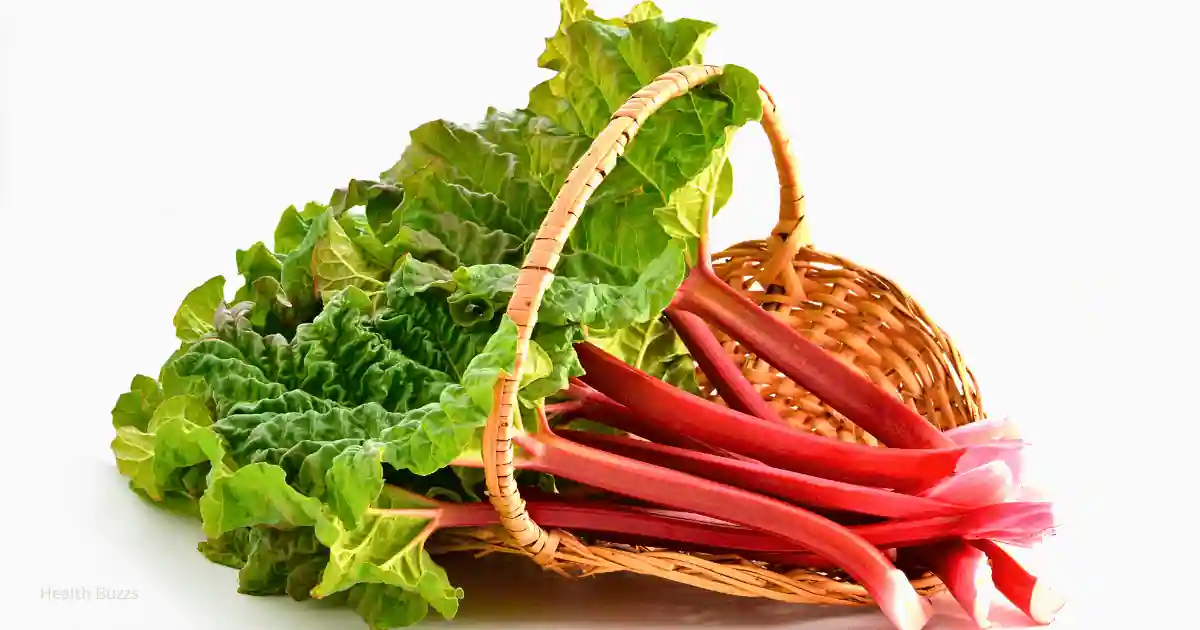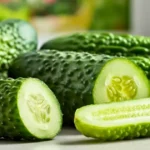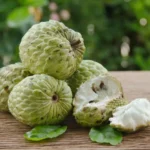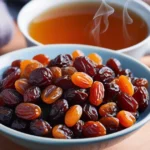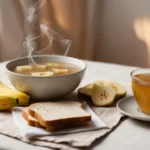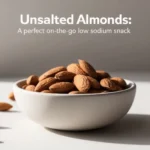Rhubarb Benefits and side effects: Rhubarb is a popular plant traditionally used for its medicinal properties. This article will discuss rhubarb’s health benefits and potential side effects.
What is Rhubarb?
Rhubarb, a perennial plant known for its thick red or green stalks and large triangular leaves, is commonly used in cooking and baking for its unique tart flavor. Here are some essential points to introduce you to the wonderful world of rhubarb:
- Botanical Background: Rhubarb belongs to the Polygonaceae family and is scientifically known as Rheum rhabarbarum. It is often referred to as a vegetable but legally classified as a fruit in the United States due to its common culinary uses.
- Varieties: There are several varieties of rhubarb, with two main types being hothouse and field-grown. Hothouse rhubarb tends to have a milder flavor and more delicate texture than the robust field-grown variety.
- Culinary Uses: Rhubarb is a versatile ingredient commonly used in pies, crisps, jams, and sauces. Its tartness pairs well with sweet fruits like strawberries, making it a popular dessert choice.
- Health Benefits: Despite its tart taste, rhubarb is packed with nutrients. It is a good vitamin K, vitamin C, calcium, potassium, and fiber source. Additionally, it contains antioxidants like lutein and zeaxanthin.
- Growing Conditions: Rhubarb thrives in cool climates and can be grown in home gardens with the right conditions. It requires well-drained soil, plenty of sunlight, and regular watering to flourish.
- Harvesting Tips: The rhubarb stalks are the edible part of the plant, while the leaves are toxic due to their high oxalic acid content. It is best to harvest rhubarb by gently pulling or cutting the stalks, being careful not to damage the plant.
Understanding these basics about rhubarb sets the stage for exploring its many culinary possibilities and health benefits.
Nutritional Benefits of Rhubarb
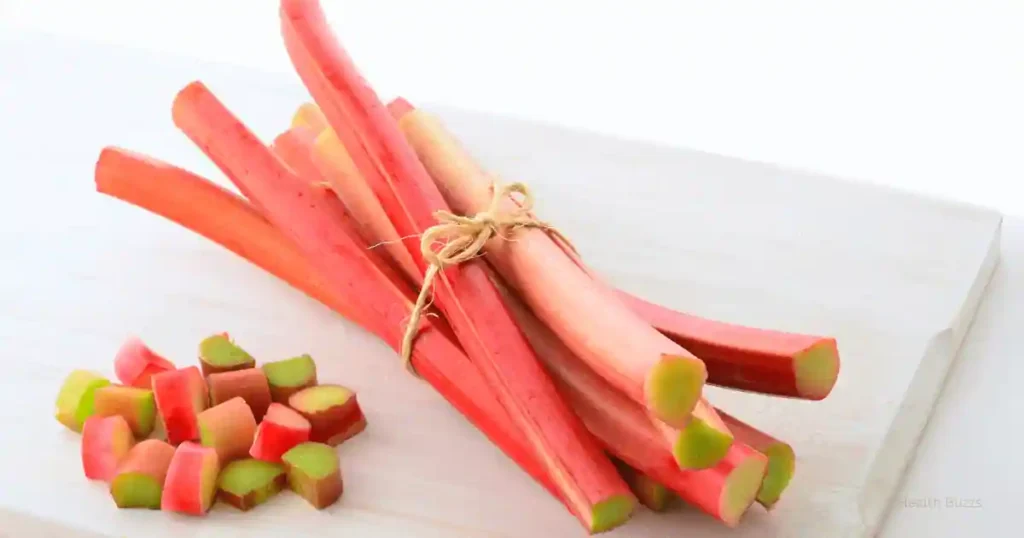
Rhubarb is a delicious ingredient in cooking and baking and a nutritional powerhouse. Here are the essential nutritional benefits of including rhubarb in your diet:
- Vitamins: Rhubarb is a good source of vitamin K, which plays a crucial role in blood clotting and bone health. It also contains vitamin C, an essential nutrient for the immune system and skin health.
- Minerals: Rhubarb contains minerals such as calcium, potassium, and manganese. Calcium is essential for bone health, potassium helps regulate blood pressure, and manganese is vital for metabolism and antioxidant function.
- Fiber: Rhubarb is a rich source of dietary fiber that benefits digestive health. Fiber helps promote regular bowel movements, prevent constipation, and support a healthy gut microbiome.
- Antioxidants: Rhubarb contains antioxidants like anthocyanins and quercetin, which help protect cells from damage caused by free radicals. These compounds have anti-inflammatory properties and may reduce the risk of chronic diseases.
- Low in Calories: Rhubarb is a low-calorie food, making it an excellent option for those looking to manage their weight or calorie intake.
- Hydration: With its high water content, incorporating rhubarb into your diet can contribute to overall hydration, which is essential for many bodily functions.
By including rhubarb in your meals, you can enjoy its unique tart flavor and its array of nutritional benefits that support your overall health and well-being.
Rhubarb Benefits and side effects
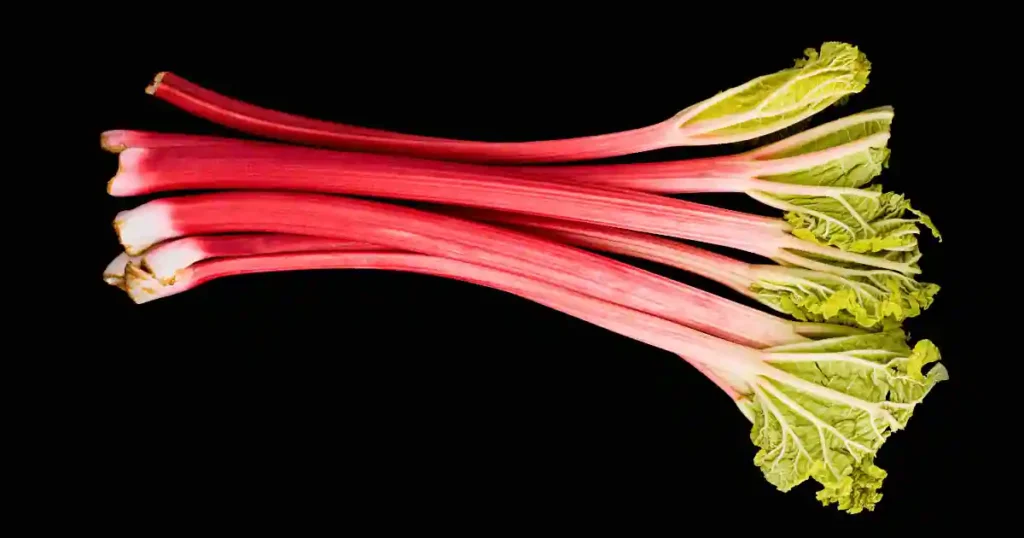
What are the health benefits of rhubarb?
- Rhubarb is packed with essential nutrients such as vitamins K and C, calcium, potassium, and dietary fiber, making it a nutritious addition to your diet.
- The high vitamin K content in rhubarb supports bone health and may help reduce the risk of osteoporosis.
- Rhubarb is a good source of vitamin C, known for its role in supporting the immune system and promoting skin health.
- The rhubarb fiber can aid digestion and promote a healthy gut by acting as a prebiotic, feeding beneficial gut bacteria.
- Some studies suggest that the antioxidants present in rhubarb have anti-inflammatory properties, potentially reducing the risk of chronic diseases.
- Rhubarb contains polyphenols, which have been associated with a reduced risk of cardiovascular diseases due to their positive effects on blood pressure and cholesterol levels.
- Consuming rhubarb may help regulate blood sugar levels due to its fiber content, potentially benefiting individuals with diabetes.
- The low-calorie content of rhubarb makes it an excellent option for those looking to maintain a healthy weight while still enjoying a flavorful treat.
By incorporating rhubarb into your diet, you can enjoy its unique taste and reap the potential health benefits it offers.
What are the side effects of rhubarb?
- Rhubarb leaves have elevated concentrations of oxalic acid, which can be poisonous when consumed in significant quantities.
- Consuming large quantities of rhubarb leaves can lead to symptoms such as difficulty breathing, seizures, kidney failure, and even death.
- People with a history of kidney stones or kidney disease should avoid eating rhubarb due to its oxalate content, which can exacerbate these conditions.
- Some individuals may experience digestive issues such as stomach pain, diarrhea, or nausea after consuming rhubarb, especially if eaten in large quantities.
- Individuals with a known allergy to foods in the Polygonaceae family, such as buckwheat or sorrel, may also be allergic to rhubarb and should avoid it.
- Cooking rhubarb can help reduce its oxalic acid levels, making it safer to consume, but it is still essential to enjoy it in moderation to avoid potential side effects.
Remember to consult a healthcare provider before adding rhubarb to your diet, especially if you have any underlying health conditions or concerns about potential medication interactions.
Culinary Uses of Rhubarb
Rhubarb is a versatile ingredient that can be used in various culinary applications. Here are some popular ways to incorporate rhubarb into your cooking and baking:
- Pies and Crisps: Rhubarb is most famous for its use in pies and crisps. The tart flavor of rhubarb pairs perfectly with sugar and other fruits like strawberries to create a delicious dessert.
- Jams and Preserves: Rhubarb’s natural tartness makes it ideal for making jams and preserves. Its bright flavor adds a unique twist to traditional fruit spreads.
- Sauces: Rhubarb can be cooked into a sauce that goes well with sweet and savory dishes. It can accompany meats like pork or chicken or as a topping for ice cream or yogurt.
- Cocktails: Rhubarb syrup or puree can add a zingy flavor to cocktails. Mix it with gin, vodka, or even champagne for a refreshing drink.
- Chutneys: Rhubarb chutney is a delicious condiment that pairs well with cheeses, grilled meats, and sandwiches. The acidic taste of this ingredient brings a unique component to every cuisine.
- Salads: Thinly sliced raw rhubarb can be added to salads for a fresh and tangy kick. It pairs well with ingredients like feta cheese, almonds, and arugula.
Rhubarb’s unique tart flavor and vibrant color make it a standout ingredient in sweet and savory dishes, offering a delicious twist to your culinary creations.
How to Select Rhubarb?
When selecting Rhubarb at the grocery store or farmer’s market, look for stalks that are firm, crisp, and brightly colored. Avoid Rhubarb with limp or wilted stalks, which may indicate it is past its prime. The color of the stalks can vary from light pink to deep red, depending on the variety, so choose based on personal preference.
How to Store Rhubarb?
To store Rhubarb, first remove any leaves, as they are toxic and should not be consumed. Then, wrap the rhubarb stalks in a damp paper towel and place them in a plastic bag in the refrigerator. Rhubarb can last in the refrigerator for up to two weeks when stored this way.
Alternatively, you can freeze Rhubarb for more extended storage. Wash and chop the Rhubarb into desired pieces before freezing them on a baking sheet. Once frozen, transfer the rhubarb pieces to a sealed container or freezer bag, removing as much air as possible before sealing. Frozen Rhubarb can last for up to a year in the freezer.
When ready to use the Rhubarb, you can thaw it in the refrigerator before incorporating it into your favorite recipes. Whether you store Rhubarb in the refrigerator or freezer, proper storage will help maintain its freshness and flavor in pies, jams, sauces, or any other delicious dishes you desire.
Popular Rhubarb Recipes
- Rhubarb Crisp
- Rhubarb Jam
- Rhubarb Compote
- Rhubarb Pie
- Rhubarb Ice Cream
Rhubarb is a versatile ingredient that can be used in various culinary creations. Here are some popular rhubarb recipes that you can try at home:
1. Rhubarb Crisp
- Prepare a mixture of chopped Rhubarb, sugar, and a hint of cinnamon.
- Top it with a crumbly mixture of oats, flour, butter, and brown sugar.
- Bake until the Rhubarb is tender and the topping is golden brown and crispy.
2. Rhubarb Jam
- Combine Rhubarb, sugar, and lemon juice in a pot.
- Cook until the mixture thickens and reaches a jam-like consistency.
- Store in jars and enjoy on toast, scones, or as a topping for yogurt.
3. Rhubarb Compote
- Simmer Rhubarb with sugar, water, and spices like ginger or vanilla.
- Cook the rhubarb until it turns into a chunky sauce.
- Serve warm or cold as a topping for pancakes, waffles, or ice cream.
4. Rhubarb Pie
- Line a pie dish with pastry dough and fill it with a mixture of Rhubarb, sugar, and cornstarch.
- Add a top crust or a lattice design, then bake until the filling is bubbly and the crust is golden brown.
5. Rhubarb Ice Cream
- Make a custard base with milk, cream, sugar, and egg yolks.
- Add pureed Rhubarb and freeze in an ice cream maker until creamy and smooth.
- Enjoy a refreshing and tangy dessert.
These recipes showcase Rhubarb’s delicious and unique flavor, whether in a sweet dessert like pie or ice cream or a tangy condiment like jam or compote. Experiment with these recipes to explore the versatility of this vibrant spring vegetable in your culinary creations.
Growing and Harvesting Rhubarb
Rhubarb is a hardy perennial plant that can thrive in various climates, making it a popular choice for home gardeners. Follow these steps to grow and harvest your Rhubarb successfully:

1. Planting:
- Choose a sunny spot with well-drained soil for planting Rhubarb.
- Plant rhubarb crowns in early spring, spacing them about 3 feet apart.
- Dig a hole slightly larger than the crown and plant it with the buds below the soil surface.
2. Maintenance:
- Keep the soil continually moist, especially in warmer weather.
- To maintain moisture and suppress weeds, apply a layer of mulch around the plant.
- Fertilize Rhubarb in early spring with a balanced fertilizer to promote healthy growth.
3. Harvesting:
- Rhubarb can be harvested in its second year after planting.
- Only harvest stalks at least 10-12 inches long by gently pulling and twisting them from the base.
- Avoid harvesting more than half of the plant’s stalks at a time to ensure continued growth.
4. Storage:
- Rhubarb can be refrigerated for a maximum of two weeks.
- You can also freeze Rhubarb for long-term storage by washing it, cutting it into pieces, and placing it in airtight containers.
5. Division:
- Divide rhubarb crowns every 4-5 years to maintain plant health and productivity.
- Dig up the crowns in early spring or late fall, divide them with a sharp knife, and replant the divisions.
By following these guidelines, you can enjoy a bountiful harvest of Rhubarb from your garden year after year.
Interesting Facts About Rhubarb
- Despite being commonly used in desserts, Rhubarb is a vegetable, not a fruit.
- The rhubarb leaves are toxic due to high levels of oxalic acid, which can be harmful if consumed in large quantities.
- Rhubarb is an excellent source of vitamin K, which is essential for blood clotting and bone health.
- It is believed that Rhubarb originated in China over 2,000 years ago and was used for its medicinal properties before becoming a popular ingredient in cooking.
- The brighter the color of rhubarb stalks, the sweeter they will taste as they contain more natural sugars.
- Rhubarb is low in calories and fiber, making it a great addition to a healthy diet.
- In the past, Rhubarb was used for its purgative properties and was considered a remedy for various ailments.
- Rhubarb is a perennial plant, meaning it will regrow year after year without replanting.
- The name “rhubarb” comes from the Latin word “rheum barbarum,” which translates to “foreign rhubarb,” as it was initially imported to Europe from Asia.
- Rhubarb can be grown in home gardens but prefers cooler climates and well-drained soil.
These interesting facts about Rhubarb shed light on its history, properties, and uses, making it a fascinating and versatile vegetable to explore.
Conclusion
- Rhubarb is a versatile plant that offers a range of health benefits due to its high vitamin K, vitamin C, and fiber content.
- Consuming Rhubarb can support digestive health, heart health, and overall well-being.
- However, it is essential to note that some individuals may experience side effects such as gastrointestinal issues or allergic reactions.
- When using Rhubarb in culinary dishes, it is crucial only to consume the stalks as the leaves contain toxic compounds.
- Rhubarb can add unique flavor to various recipes, from pies to jams to savory dishes.
- Rhubarb can be a tasty addition to your diet, whether enjoyed in sweet or savory dishes.
- Remember to consult with a healthcare professional if you have specific health concerns or medical conditions before incorporating Rhubarb into your diet.
Rhubarb is a nutrient-dense plant that can be a flavorful and healthy addition to your meals. With its tangy taste and impressive nutritional profile, Rhubarb offers a delicious way to boost your intake of essential vitamins and minerals. However, it’s essential to be mindful of potential side effects and properly prepare Rhubarb to ensure a safe dining experience. Whether you grow it in your garden or pick it up at the store, Rhubarb is a versatile ingredient that can enhance both sweet and savory dishes. Enjoy the benefits of Rhubarb in moderation as part of a balanced diet to make the most of this unique plant.
Hi there! I’m content writer and blogger. With over two years of experience, I’ve shared my passion for writing across various platforms. I firmly believe in the transformative power of words and look forward to sharing this journey with you. Enjoy my work!
